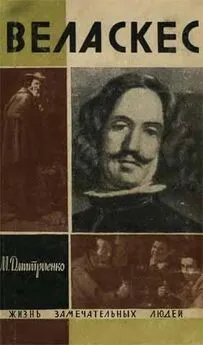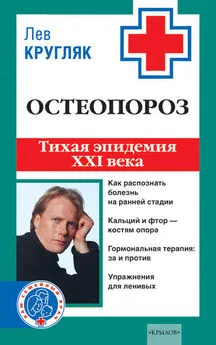Мойзес Веласкес-Манофф - Эпидемия стерильности
- Название:Эпидемия стерильности
- Автор:
- Жанр:
- Издательство:Манн, Иванов и Фербер
- Год:2019
- Город:Москва
- ISBN:978-5-00117-706-7
- Рейтинг:
- Избранное:Добавить в избранное
-
Отзывы:
-
Ваша оценка:
Мойзес Веласкес-Манофф - Эпидемия стерильности краткое содержание
Эпидемия стерильности - читать онлайн бесплатно ознакомительный отрывок
Интервал:
Закладка:
122
Luis B. Barreiro, Lluís Quintana-Murci. “From Evolutionary Genetics to Human Immunology: How Selection Shapes Host Defence Genes”. Nature Reviews Genetics 11, № 1 (2010).
123
Erik Corona, Joel T. Dudley, Atul J. Butte. “Extreme Evolutionary Disparities Seen in Positive Selection Across Seven Complex Diseases”. PLoS ONE 5, № 8 (2010).
124
K. Sadeharju et al. “The HLA-DR Phenotype Modulates the Humoral Immune Response to Enterovirus Antigens”. Diabetologia 46, № 8 (2003).
125
Andrea L. Graham, Daniel H. Nussey. “Fitness Correlates of Heritable Variation in Antibody Responsiveness in a Wild Mammal”. Science 330, № 6004 (2010).
126
Michael Walther et al. “Upregulation of TGF-beta, FOXP3, and CD4+CD25+ Regulatory T-cells Correlates with More Rapid Parasite Growth in Human Malaria Infection”. Immunity 23, № 3 (2005).
127
M. G. Torcia et al. “Functional Deficit of T-Regulatory Cells in Fulani, an Ethnic Group with Low Susceptibility to Plasmodium Falciparum Malaria”. Proceedings of the National Academy of Sciences 105, № 2 (2008).
128
Michael Walther et al. “Distinct Roles for FOXP3 and FOXP3 CD4 T-сells in Regulating Cellular Immunity to Uncomplicated and Severe Plasmodium falciparum Malaria”. PLoS Pathogens 5, № 4 (2009).
129
Серповидноклеточный признак может проявляться в виде частично толерантного ответа. На протяжении десятков лет ученые вели споры по поводу того, как этот признак защищает его носителей. Он укрепляет защиту красных кровяных клеток, делая их неуязвимыми перед возбудителями инфекции? Он быстрее устраняет паразита? Он помогает очистить пораженные паразитами эритроциты? Многочисленные данные свидетельствуют о том, что ничего из перечисленного выше не соответствует действительности: носители серповидноклеточного признака заражаются малярией так же часто, как и те люди, у которых этого признака нет, а в крови циркулирует много паразитов. Чего им действительно удается избежать, так это церебральной малярии, основного осложнения в результате заражения паразитом P. falciparum . Почему? Они выживают благодаря контролю над многими возбудителями инфекции и толерантности к ним. Tomas N. Williams et al. “An Immune Basis for Malaria Protection by the Sickle Cell Trait”. PLoS Medicine 2, № 5 (2005); M. Cyrklaff et al. “Hemoglobins S and C Interfere with Actin Remodeling in Plasmodium falciparum-infected Erythrocytes”. Science 334, № 6060 (2011).
130
Alessandro Mathieu et al. “The Interplay between the Geographic Distribution of HLA-B27 Alleles and Their Role in Infectious and Autoimmune Diseases: A Unifying Hypothesis”. Autoimmunity Reviews 8, № 5 (2009).
131
Olivia C. Finney et al. “Homeostatic Regulation of T-Effector to Treg Ratios in an Area of Seasonal Malaria Transmission”. European Journal of Immunology 39, № 5 (2009); Olivia C. Finney, Eleanor M. Riley, Michael Walther. “Regulatory T-cells in Malaria — Friend or Foe?” Trends in Immunology 31, № 2 (2010).
132
Marta Barreto et al. “Low Frequency of CD4+CD25+ Treg in SLE Patients: A Heritable Trait Associated with CTLA4 and TGFbeta Gene Variants”. BMC Immunology 10 (2009).
133
Rick M. Maizels. “Parasite Immunomodulation and Polymorphisms of the Immune System”. Journal of Biology 8, № 7 (2009).
134
A. Paolillo et al. “The Effect of Bacille Calmette-Guérin on the Evolution of New Enhancing Lesions to Hypointense T1 Lesions in Relapsing Remitting MS”. Journal of Neurology 250, № 2 (2003).
135
Roger von Oech. Whack on the Side of the Head. New York: Fine Communications, 2001, 11.
136
Ген, вызывающий предрасположенность к болезни Крона (вариант гена NOD2/CARD15, который кодирует микробный рецептор), был идентифицирован в 2001 году. D. P. Mcgovern et al. “NOD2 (CARD15), the First Susceptibility Gene for Crohn’s Disease”. Gut 49, № 6 (2001). Полное название этого гена — «содержащий нуклеотид-связывающий домен олигомеризации белок 2». Этот ген кодирует рецептор, который помогает обнаруживать различные микроорганизмы, в том числе резидентные бактерии. Наличие одной копии этого гена увеличивает вероятность воспалительных заболеваний кишечника более чем в два раза; наличие двух копий увеличивает эту вероятность в семнадцать раз. Детали того, как работает (или не работает) этот вариант гена, не совсем ясны, но предположительно он влияет на способность иммунной системы отличать друзей от врагов. Shiva Yazdanyar et al. “Penetrance of NOD2/CARD15 Genetic Variants in the General Population”. Canadian Medical Association Journal 182, № 7 (2010).
137
Большая часть информации, представленной в главе, взята из: Elliott and Weinstock. “Inflammatory Bowel Disease and the Hygiene Hypothesis: An Argument for the Role of Helminths” // Rook, The Hygiene Hypothesis and Darwinian Medicine.
138
В случае более чистых условий жизни в детском возрасте риск воспалительных заболеваний кишечника возрастает в пять раз. A. E. Gent et al. “Inflammatory Bowel Disease and Domestic Hygiene in Infancy”. Lancet 343, № 8900 (1994).
139
Joel V. Weinstock et al. “The Possible Link between De-worming and the Emergence of Immunological Disease,” Journal of Laboratory and Clinical Medicine 139, № 6 (2002). D. E. Elliott et al. “Does the Failure to Acquire Helminthic Parasites Predispose to Crohn’s Disease?” FASEB Journal 14, № 12 (2000).
140
Большая часть истории о воспалительных заболеваниях кишечника взята из: Joseph B. Kirsner. “The Historical Basis of the Idiopathic Inflammatory Bowel Diseases”. Inflammatory Bowel Diseases, № 1 (1995); S. Wilks. “Morbid Appearances in the Intestine of Miss Bankes”. London Medical Gazette 2 (1859).
141
J. F. Fielding. “Crohn’s Disease and Dalziel’s Syndrome: A History”. Journal of Clinical Gastroenterology 10, № 3 (1988).
142
W. H. Allchin. “A Discussion on ‘Ulcerative Colitis’: Introductory Address”. Proceedings of the Royal Society of Medicine 2, Med Sect (1909).
143
J. A. Ferrell. The Rural School and Hookworm Disease. Washington: General Printing Office, 1914, 42–43.
144
Столл считал, что общий вес самих гельминтов равен весу 442 000 мужчин. «С точки зрения гельминтологии это можно обозначить как тяжелую роль хозяина, которую играют люди в жизни гельминтов», — писал он. N. R. Stoll. “This Wormy World”. Journal of Parasitology 33, № 1 (1947).
145
В начале 70-х годов у трети афроамериканских школьников Нового Орлеана все еще обнаруживали гельминтов, хотя уровень заражения был довольно низким. То же самое можно сказать о Южной Каролине. G. M. Jeffery et al. “Study of Intestinal Helminth Infections in a Coastal South Carolina Area”. Public Health Reports 78 (1963); D. W. Hubbard et al. “Intestinal Parasite Survey of Kindergarten Children in New Orleans”. Pediatric Research 8, № 6 (1974).
146
G. R. Healy et al. “Prevalence of Ascariasis and Amebiasis in Cherokee Indian School Children”. Public Health Reports 84, № 10 (1969).
147
H. S. Fulmer, H. R. Huempfner. “Intestinal Helminths in Eastern Kentucky: A Survey in Tree Rural Counties”. American Journal of Tropical Medicine and Hygiene 14 (1965).
148
Судя по данным медицинских карт ветеранов, среди солдат из северных штатов было, как правило, больше случаев воспалительных заболеваний кишечника, чем у солдат из южных штатов, а у белых они встречались чаще, чем у афроамериканцев. Более молодые ветераны с разной расовой принадлежностью чаще страдали воспалением кишечника, чем ветераны старшего возраста. Однако этот риск поддавался модификации. Солдаты, которые служили во Вьетнаме и предположительно могли контактировать с тропическими паразитами, болели воспалительными заболеваниями кишечника реже остальных. У бывших военнопленных, которых содержали в грязных условиях, воспаление кишечника встречалось реже, чем у солдат, которым не довелось пережить такие тяжелые испытания. См.: A. Sonnenberg, I. H. Wasserman. “Epidemiology of Inflammatory Bowel Disease Among U.S. Military Veterans”. Gastroenterology 101, № 1 (1991); F. Delcò, A. Sonnenberg. “Military History of Patients with Inflammatory Bowel Disease: An Epidemiological Study Among U.S. Veterans”. American Journal of Gastroenterology 93, № 9 (1998).
149
Chris Green et al. “A Population-based Ecologic Study of Inflammatory Bowel Disease: Searching for Etiologic Clues”. American Journal of Epidemiology 164, № 7 (2006).
150
I. Segal. “Ulcerative Colitis in a Developing Country of Africa: The Baragwanath Experience of the First 46 Patients”. International Journal of Colorectal Disease 3, № 4 (1988).
Читать дальшеИнтервал:
Закладка:










